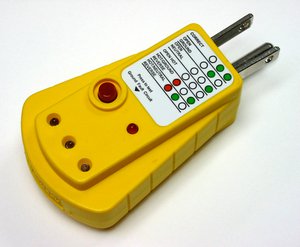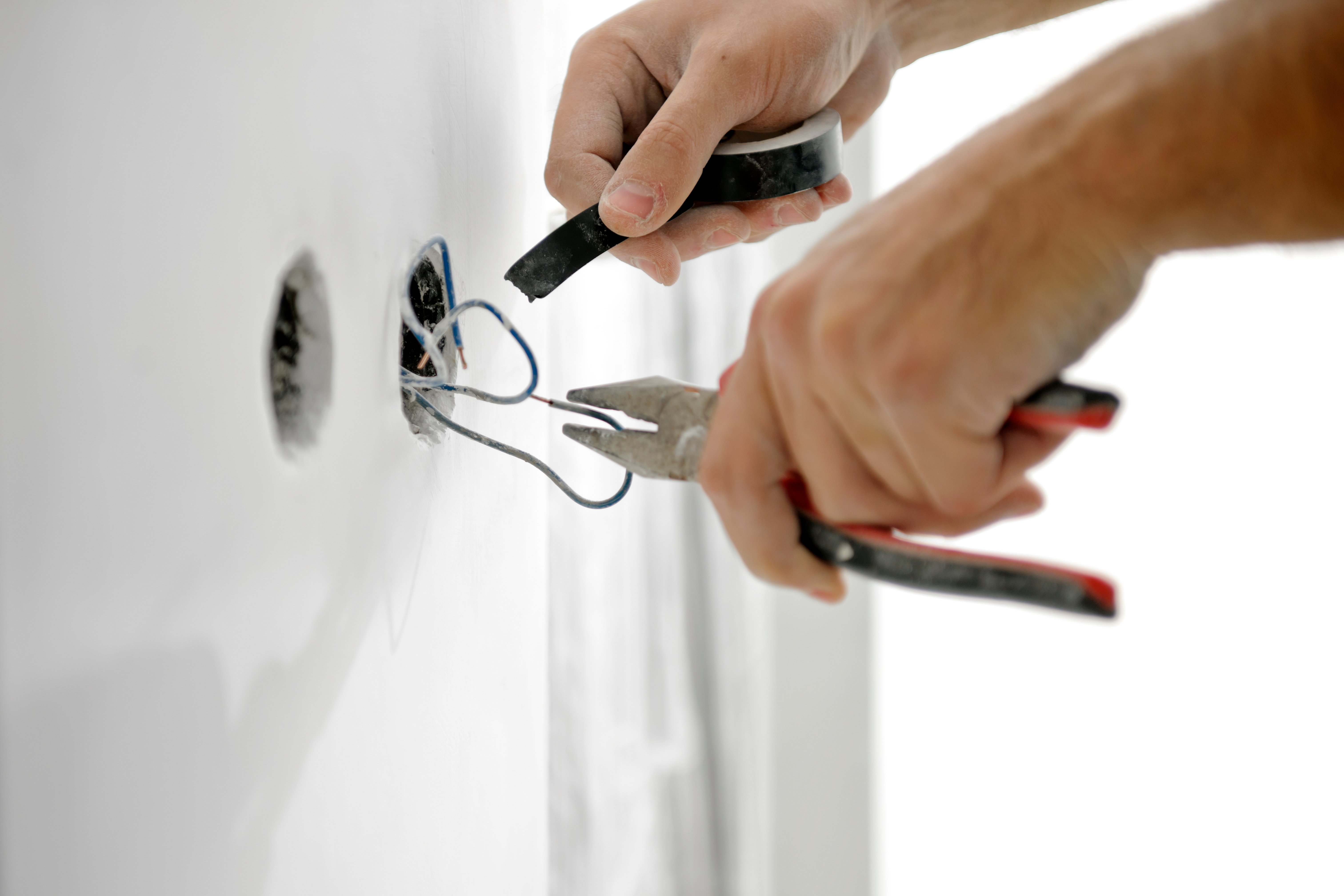What is Ground Fault Protection?
Ground fault protection or ground fault circuit interrupter (GFCI) is a device designed to provide protection and to prevent electrical shock by breaking the circuit once a difference in currents between hot and neutral wires occurs.
A GFCI is constantly monitoring the amount of electricity that is flowing into a circuit and also monitoring when the current is lost. So if the amount of current flowing doesn’t return back to the GFCI unit, it immediately stops supplying power. By immediately cutting off the power, this saves you from electric shock or electrocution.

Developed in the 1960s, the GFCI became a success soon after it was developed into a commercial product by a handful of companies, including several circuit breaker manufacturers. The GFCI was first required by the National Electric Code (NEC) to be installed for underwater swimming pool lighting fixtures, because backyard swimming pools were becoming very popular. In subsequent years, the NEC made it a requirement to have GFCIs in other areas of your house, especially in locations where people would be standing on earth, cement ground, or near water. Just 25 years after the GFCI was first introduced, the use of electricity had doubled but the number of accidental electrocutions in the U.S. had dropped in half in that same time period.
So why is ground fault protection important and necessary for electric radiant floor heating?
Electric radiant floor heating is a heating system that consists of electric cables built into the floor. The electric cables or mats warm your floor and are controlled by a thermostat that has a GFCI installed in it for optimal safety and comfort.
If you have radiant floor heating and an imbalance within the electrical currents occurs, the GFCI in the radiant heat thermostat will automatically and instantly disconnect the electrical lines from the radiant heating system. The WarmlyYours thermostats are GFCI protected and a GFCI breaker is not necessary. And, we recommend only one GFCI device on the circuit be used to provide power to the heating element.
The U.S. Consumer Product Safety Commission believes that by installing GFCIs in every home in the United States, more than two-thirds of the approximately 300 electrocutions occurring each year could be prevented.
So, when you are shopping around for electric floor heating, be sure that the product has GFCI protection as a standard. Here at WarmlyYours Radiant, protecting our installers and customer is top of mind when we develop and sell our products. And that's why we ensure that our floor heating and snow melting products are GFCI protected and come with all of the important safety certifications such as, C/UL/us and UL listings, as well as RoHS compliance.





Wiring a radiant heat system with a gfci.would you use the load side of the gfci?
Warmlyyours Thermostats have a built-in GFCI, so they need to be wired to a non-GFCI circuit breaker and the wiring needs to be done according to the following diagram: https://www.warmlyyours.com/en-US/publications/OJ-THERMOSTAT-GENERIC-WIRING-DIAGRAM-A Feel free to contact our Technical Department, 24/7, at 800-875-5285 if you need additional help.
Is there any disadvantage to using a breaker GFCI and a non GFCI thermostat?
The primary disadvantage to using a breaker with GFCI and a non-GFCI thermostat is that you'll lose some convenience. You won't be able to as easily view the GFI status and you won't be able to test/reset from the room. Additionally, the majority of floor heating thermostats being produced currently have integrated GFCI, so it would make it hard to find a replacement in the future without having a GFCI thermostat and GFCI breaker on the same line (which can cause nuisance tripping).
Is there anyway to operate the thermostat without the GFI? Like anything we can do to the thermostat itself to turn that off?
Thanks for the question! GFCI protection is an integrated feature for a thermostat, so it can't be turned off. Like most of the floor heating industry, all of the thermostats from WarmlyYours come with this feature. This is because a floor heating system should always be operated with GFCI protection. If you're concerned about what is called "nuisance tripping," there may be some options available that our 24/7 Tech Support team can help you identify. Just give us a call at 1 800 875 5285 or shoot us an email at info@warmlyyours.com, and we'd be glad to try and help.
Can an AFCI circuit breaker work correctly with your GFCI thermostat?
Thanks for the question. The National Electric Code (NEC 424.44 (G)) requires GFCI protection for personnel. Most local inspectors will defer to our Listed install manuals, which mention GFCI (not AFCI). Our thermostats come with integrated GFCI (as do most in the industry), so using a GFCI thermostat on the same circuit as an AFCI circuit breaker is not recommended. If you have any further questions, just give us a call at 800-875-5285 and our Tech Team would be glad to help.
I have a thermostat with a GFCI and after operating for 2 weeks it tripped and woud not reset. I tested cables and they are ok. I replaced the thermostat and it worked again for 2 weeks. The GFCI thermostat is doing the same thing. The thermostat trips with floor cables disconnected.
That's a great question. It's possible that you're experiencing "nuisance tripping" which can be caused if other appliances are on the same line or if there are also GFCI breakers being used. But we'll need some additional information to help correctly troubleshoot the issue. Please give us a call at 1-800-875-5285 and our 24/7 Technical Support team will be glad to help.
My floors are not heating past the first 4’ section. In addition, my thermostat test button is saying “ground fault error”. What should I do? What do you think is the problem?
Our 24/7 Tech Team should be able to help you identify the cause of this issue and hopefully help resolve it. Just give us a call at 1-800-875-5285 and we'll be there to help!
My floors are not heating past the first 4’ section. In addition, my thermostat test button is saying “ground fault error”. What should I do? What do you think is the problem?